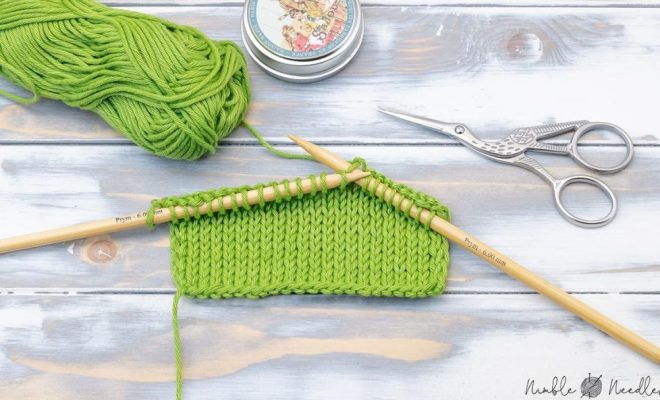How to Knit Decreases: A 9-Step Guide

Introduction:
Knitting decreases are essential for shaping your knitting projects and creating more complex designs. There are many ways to decrease stitches, but in this article, we’ll cover the basics of knit decreases in 9 simple steps.
Step 1: Choose the right type of decrease
The first step is to choose the appropriate decrease technique for your project. There are two common types of decreases – knit two together (k2tog) and slip, slip, knit (ssk). The k2tog is a right-leaning decrease, while ssk is left-leaning.
Step 2: Preparing for the decrease
To begin, knit to the point where you’ll be applying the decrease. This will vary based on your project pattern or desired design.
Step 3: Knit two together (k2tog)
To perform the k2tog, insert your right needle through the next two stitches on the left needle as if to perform a regular knit stitch. Wrap the yarn around your right needle and pull through both stitches, slipping them off the left needle.
Step 4: Slip, slip, knit (ssk)
To perform an ssk, slip the first stitch as if to knit from your left needle to your right needle. Then, slip the second stitch as if to knit as well. Insert your left needle into the front loops of these two slipped stitches from left to right and wrap the yarn around your right needle. Pull through both stitches and slip them off the needles.
Step 5: Central double decrease (cdd)
For a more advanced double decrease that decreases two stitches at once and leans neither left nor right, you can use a central double decrease (cdd). Slip two stitches together as if to knit from your left needle to your right needle. Knit one stitch from your left needle, then pass the two slipped stitches over the knit stitch and off the needle.
Step 6: Practicing different techniques
Try experimenting with different decrease techniques on a practice swatch to determine which one is right for your project. Mixing and matching the various methods can create unique stitch patterns and textures.
Step 7: Plan your decreases
Make sure to carefully plan your decreases in your project. It’s essential to space them evenly, or follow a specific pattern to achieve clean lines and ensure that the garment will fit correctly.
Step 8: Count your stitches
After completing each row with decreases, don’t forget to count your stitches! This will help you keep track of your progress and ensure you’re decreasing as intended.
Step 9: Block your finished piece
Blocking is the process of wetting, stretching, and shaping your knitted piece to achieve an even size and shape. This step is critical for projects with decreases, as it will help smooth out any rough edges or uneven tension caused by the decreases.
Conclusion:
By following these straightforward steps, you’ll be able to knit decreases with ease in your projects, giving them a polished and professional appearance. With practice, you’ll soon master these techniques and incorporate them into a wide variety of knitting projects.






